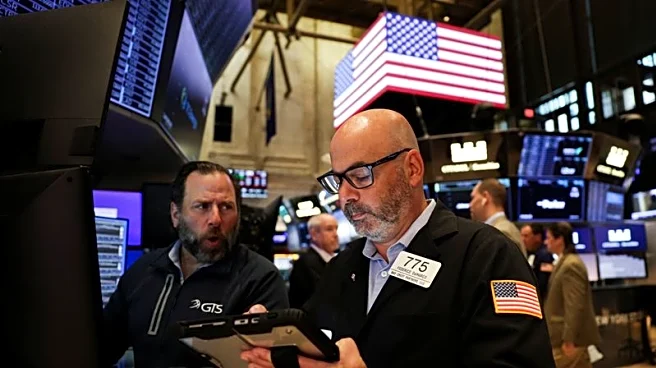What's Happening?
The S&P 500 index is poised to open at a record high, driven by renewed expectations for interest rate cuts from the Federal Reserve. This development comes as traders navigate a session with limited new data due to the ongoing U.S. government shutdown. The shutdown has created a data vacuum, prompting investors to rely on alternative sources to gauge the economic landscape. Recent reports, including a weaker-than-expected ADP National Employment Report and a report from Challenger, Gray & Christmas indicating fewer layoffs but low hiring plans, have fueled speculation of a 25-basis-point rate cut by the Fed. The shutdown has also halted the release of key labor market data, such as the weekly jobless claims report, increasing reliance on non-traditional indicators.
Why It's Important?
The anticipation of interest rate cuts by the Federal Reserve is significant as it reflects the central bank's response to economic uncertainties, including the impact of the government shutdown. Rate cuts are generally seen as a measure to stimulate economic activity by making borrowing cheaper, which can boost consumer spending and investment. The potential rate cut is particularly relevant for the stock market, as lower interest rates can enhance corporate profitability and investor sentiment, contributing to the S&P 500's record highs. However, the shutdown's impact on data availability complicates the Fed's ability to make informed policy decisions, potentially leading to more cautious or reactive monetary policy adjustments.
What's Next?
Investors will closely monitor upcoming commentary from Federal Reserve officials, including Dallas Fed President Lorie Logan, for insights into the central bank's policy direction. The duration of the government shutdown will also be a critical factor, as prolonged data gaps could pressure the Fed to continue rate cuts. Market participants will watch for any developments that might resolve the shutdown, which could restore the flow of economic data and provide clearer guidance for future monetary policy decisions.











